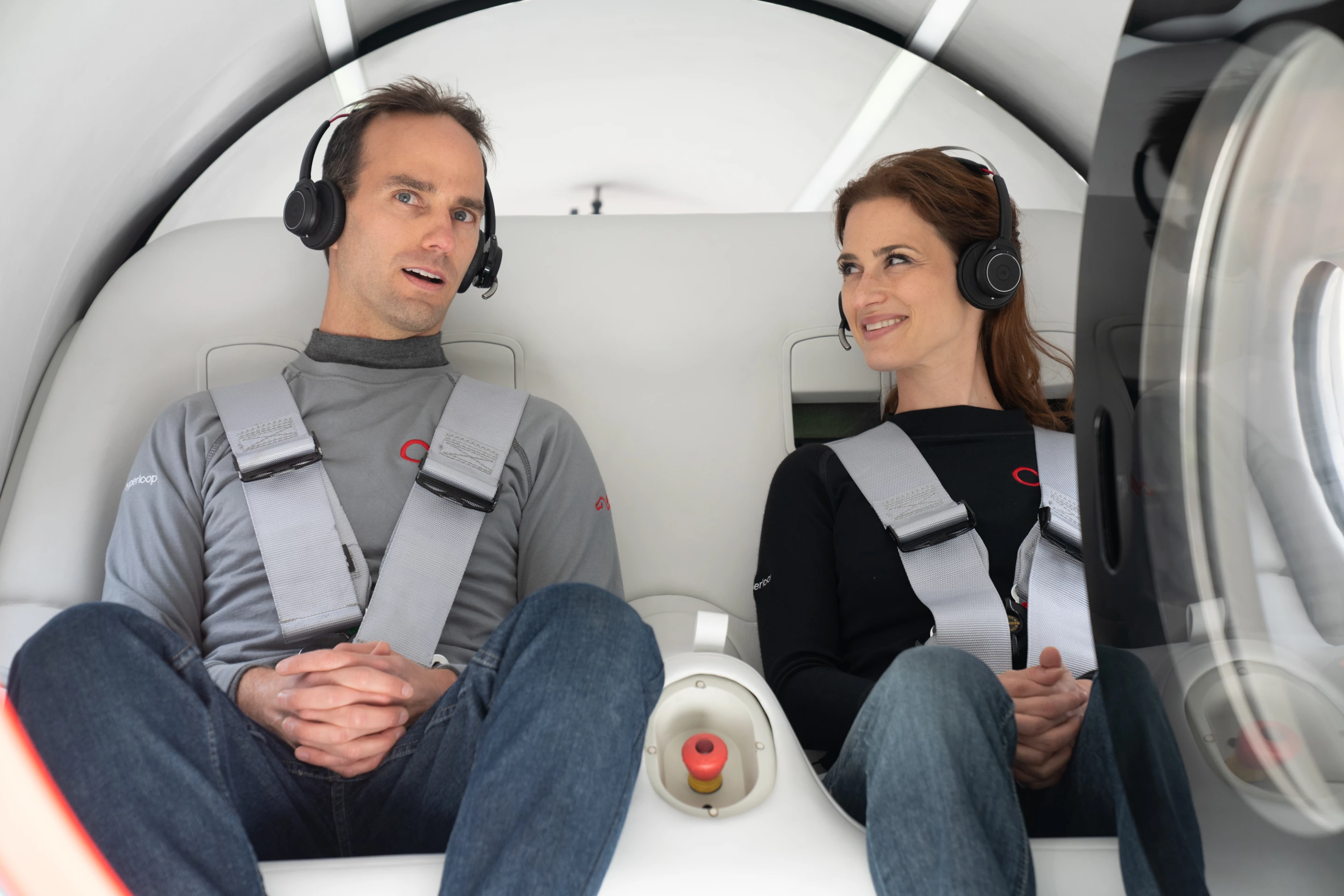In a landmark moment for the experimental transportation technology, Virgin Hyperloop has welcomed aboard its first ever passengers, albeit only for a short spin along a test track. These first ever human trials of a hyperloop system follow hundreds of unmanned test runs at the company’s facility in Nevada, and bode well for its ability to safely transport people through near-vacuum tubes.
Over the past few years, Virgin Hyperloop has been testing its passenger pods at its 500-meter-long (1,600-ft) track in the Nevada desert, where it has hit speeds of nearly 387 km/h (240 mph) with no one onboard. These magnetically levitating pods travel through near-vacuum tubes and are designed to eventually hit speeds of around 1,200 km/h (745 mph), which would make it possible to travel from LA to San Francisco in just 30 minutes.
Proving this technology is safe for humans is obviously a key consideration for the Virgin Hyperloop team, and on Sunday it was able to take an important step towards that goal. The capsule used was a new prototype called the XP-2, which had been adapted to comfortably carry two human passengers.
Virgin Hyperloop co-founder and CTO Josh Giegel and Director of Passenger Experience Sara Luchian were the first humans to hop aboard, with the test run taking them to speeds of 172 km/h (107 mph), according to the BBC.

“Hyperloop is about so much more than the technology. It’s about what it enables,” said Luchian. “To me, the passenger experience ties it all together. And what better way to design the future than to actually experience it first-hand?”
According to Virgin Hyperloop, the XP-2 pod is fitted with many of the same safety systems that would feature on a commercial version of the hyperloop. While demonstrating these safety systems is an important milestone, there is a long way to before they are done at around the speed of sound. The company has previously said it hopes to achieve safety certification by 2025, and have a commercial service up and running by 2030.
“When we started in a garage over six years ago, the goal was simple – to transform the way people move,” said Giegel. “Today, we took one giant leap toward that ultimate dream, not only for me, but for all of us who are looking towards a moonshot right here on Earth.”
You can see a video of the test run below.
Source: Virgin Hyperloop







